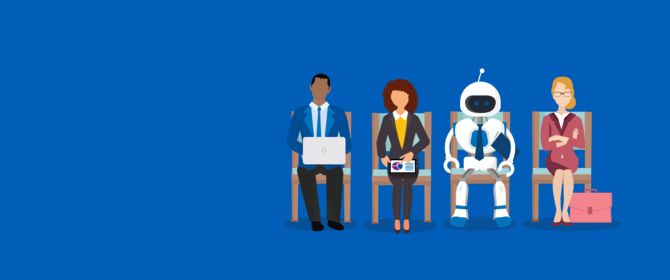
Today’s employers face a daunting array of historic challenges as they speed into a digital economy that’s already transforming businesses and the traditional human resources (HR) functions that serve them. HR change is inevitable; KPMG International’s new Future of HR global study reveals that HR leaders have conflicting attitudes and approaches to this change.
Our latest survey of 1,200 global HR executives exposes a clear and disconcerting gulf between action and indifference on transforming the HR function for the 21st century.
Forward-looking HR leaders are confidently harnessing the resources and insights that will redefine the traditional HR model and its contribution to the enterprise. They are following strategic plans and implementing new technologies such as analytics, digital labor and artificial intelligence. And they are pursuing the critical new skills needed to succeed in the digital age.
But we also see a much larger segment of less-confident HR leaders who are demonstrating either an unsustainable, wait-and-see approach to change – or simply sitting idle on the sidelines.
These HR leaders are adopting a risky stance as the scope and pace of change accelerates. Those making limited strides could, in a few short years, see today’s technology disrupt them out of existence. While the largely inactive face a much shorter timeline to extinction as the digital economy quickly renders them irrelevant.
“Those that ‘get it’ are acting decisively, viewing HR as a new value driver and turning to data, predictive insights and AI. The rest are either limiting themselves to changes that show some progress, perhaps though data and analytics initiatives, or simply clinging to a static approach that’s perilous,” says Robert Bolton, Partner, Global People and Change Center of Excellence, KPMG in the UK.
Unique new skills are already becoming critical to success, even survival, in the digital era – along with a new employee experience designed to attract and retain the best and the brightest, and meet the needs of our multigenerational workforce.
Dramatically realigning workforces to facilitate collaboration between employees and advanced robotics, automation and artificial intelligence is also imperative – and coincides with a demographic trend bringing five generations together within a workforce that’s more diverse than ever.
Beyond that, exploiting the full capabilities of data and analytics tools for informed decision-making and predictive insights will be indispensable.
Daunting challenges indeed. Yet, while our latest survey reveals a troubling level of uncertainty and inertia that could prove costly for some organizations, it also shows a lack of progress since we last shone a spotlight on the HR transformation trail with our 2017 survey report – HR Transformation: Which lens are you using.
Uncertainty continues to prevail.
“The dichotomy endures. We view that as troubling – particularly today as the pace of change accelerates relentlessly,” Bolton notes. “Many businesses are exhibiting uncertainty and inertia. They apparently don’t recognize what today’s transformation trailblazers know and are clearly acting on: uncertainty in this era is today’s new normal. The trailblazers are exploiting uncertainty and doubt as a critical opportunity to drive new competitive advantage and leap ahead of the pack amid the forces of disruption.”
Connect with us
- Find office locations kpmg.findOfficeLocations
- kpmg.emailUs
- Social media @ KPMG kpmg.socialMedia

